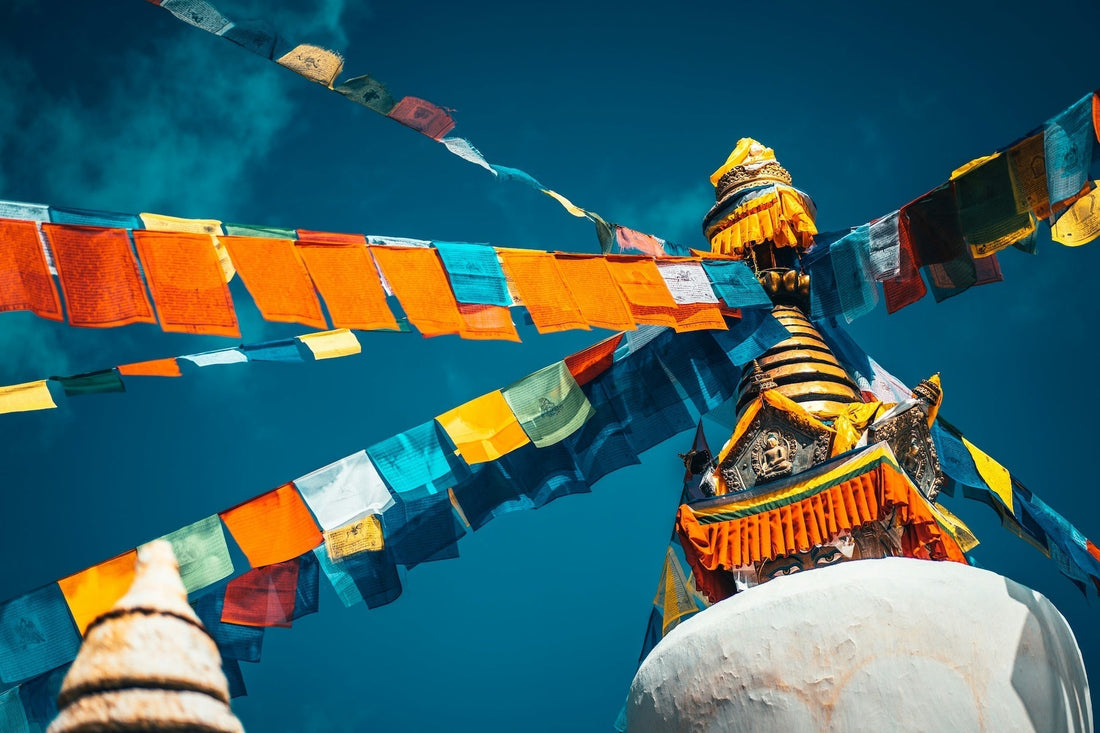
Incense in Tibetan and Nepalese Culture
Nestled in the high altitudes of the Himalayas, Tibet and Nepal share a rich spiritual tradition where incense is more than fragrance—it’s medicine, offering, and meditation in one. Rooted in centuries of Buddhist philosophy and Himalayan herbal wisdom, the use of incense in these regions reflects a worldview where scent, spirit, and nature are deeply intertwined.
In this blog, we’ll explore how incense is used in Tibetan and Nepalese culture—from monastic rituals to daily devotion—and why it remains such a powerful part of life in the mountains.

A Blend of Spirituality and Healing
Unlike the floral or woody incense of other cultures, Tibetan and Nepalese incense is known for its earthy, herbal, and resinous profile. That’s because it originates from two key traditions:
- Tibetan Buddhism, where incense is burned as part of daily rituals, offerings, and meditation.
- Traditional Himalayan medicine, where aromatic herbs are used to treat both physical and spiritual imbalances.
The result is a form of incense that heals, protects, and uplifts—not just symbolically, but through the properties of the natural materials it’s made from.
What Makes Tibetan and Nepalese Incense Unique?
Tibetan and Nepalese incense is often thick, rope-like, or stick-shaped without a bamboo core, allowing it to burn cleanly and slowly. It’s traditionally handmade by monks or local artisans using sacred recipes passed down through generations.
Common ingredients include:
- Juniper – for cleansing negative energy
- Sandalwood – for calming the mind
- Frankincense & myrrh – for spiritual connection
- Nagi (a local resin) – for purification
- Rhodiola, saffron, and spikenard – used in traditional medicine
- Cedarwood, clove, cinnamon, and cardamom – to balance the elements
Many blends are based on Ayurveda and Tibetan medical texts that view incense as a therapeutic tool for harmonizing body, energy, and spirit.
Ritual Use in Temples and Homes
In both Tibet and Nepal, incense is burned every day—on mountain paths, inside temples, and on household altars.
Key uses include:
- Puja offerings to deities, Buddhas, and bodhisattvas
- Cleansing rituals for homes and sacred spaces
- Protection from unseen energies or spiritual harm
- Accompanying mantras and meditation
- Marking the passing of time (especially during long retreats or prostration practices)
At many Buddhist monasteries, giant coils or bundles of incense are lit each morning to consecrate the day and welcome divine blessings.
In Nepal, especially among the Newar and Tibetan communities, incense is also part of ancestral offerings, healing ceremonies, and temple festivals.
Incense as a Path to Balance
In Tibetan Buddhism, burning incense is considered a form of “generosity”—offering pleasant sensory experiences to the Buddhas, protectors, and beings of all realms. It also helps purify karma and cultivate virtue.
Spiritually, incense symbolises:
- The transient nature of life (like the smoke that rises and disappears)
- The path of transformation, where coarse material becomes fine essence
- The bridge between visible and invisible worlds
In Tibetan medicine, incense is also used to balance the three humours (wind, bile, and phlegm), treating disorders of stress, sleep, and low energy.
Reference: Dhondrup, T. (2004). Essentials of Tibetan Traditional Medicine. Men-Tsee-Khang Publications.
Handmade with Intention
Many incense producers in Nepal and Tibet still make incense by hand, especially in regions like Kathmandu, Boudhanath, and Lhasa. These artisans:
- Grind herbs and woods into fine powders
- Mix them with water or natural binders
- Roll or extrude them into sticks or ropes
- Dry them slowly in shade to preserve aroma
Buying authentic Tibetan or Nepalese incense helps preserve traditional livelihoods and spiritual practices, especially as younger generations move away from monastic life.
Conclusion: A Sacred Tradition That Endures
In Tibetan and Nepalese culture, incense isn’t a luxury or afterthought—it’s a vital part of daily life, prayer, and healing. Each time a stick is lit, it connects earth and sky, body and breath, offering and intention.
Whether you're seeking peace, protection, or presence, the ancient incense traditions of the Himalayas invite you to breathe deeply, and return to what matters most.
